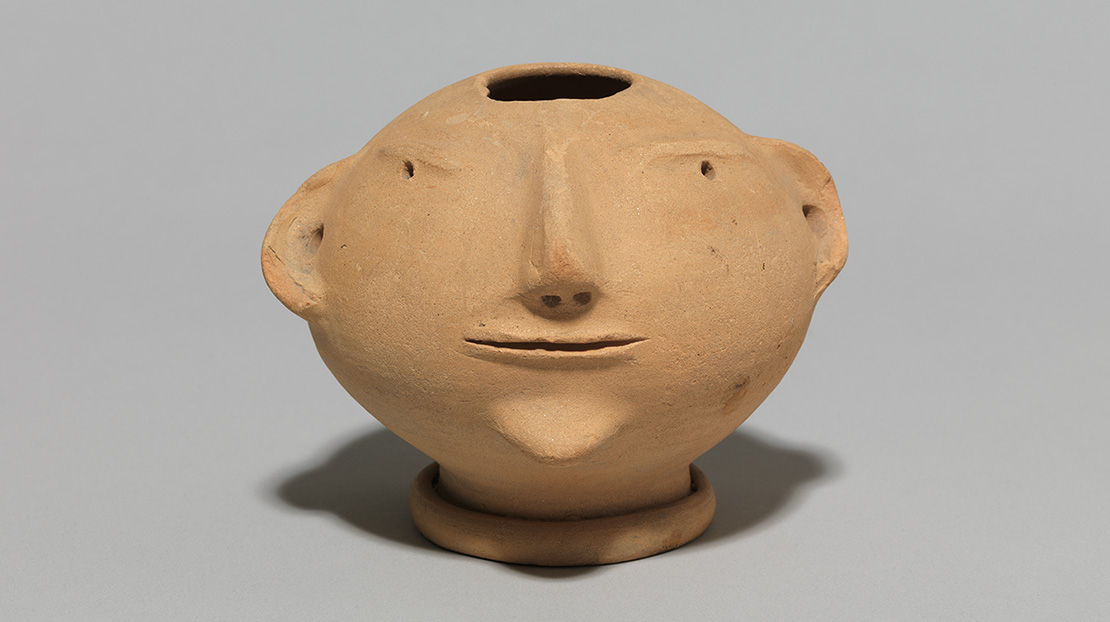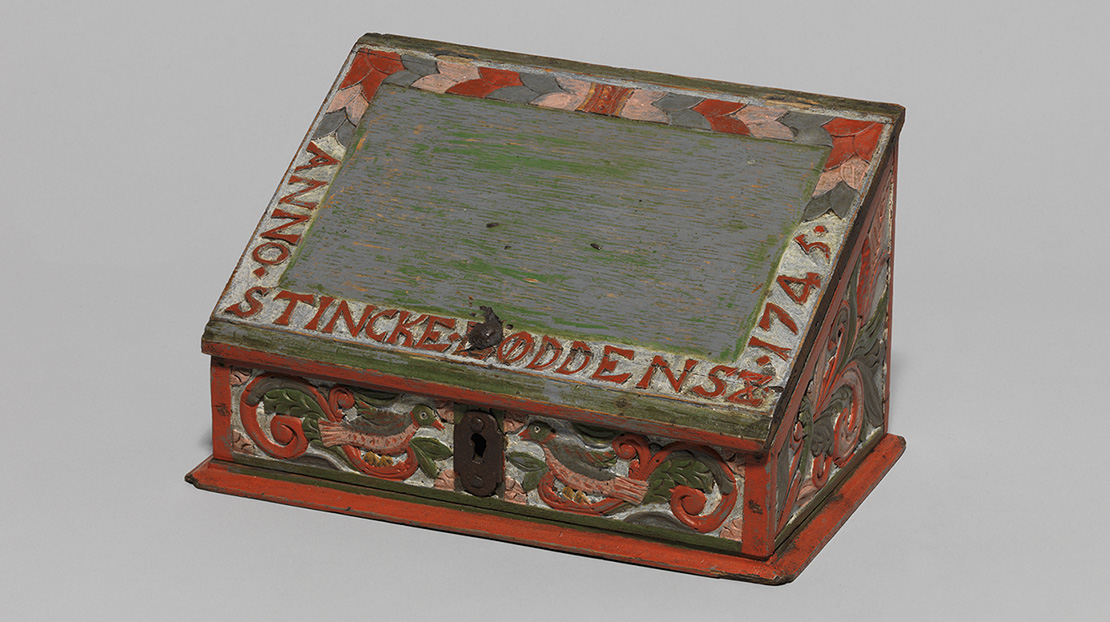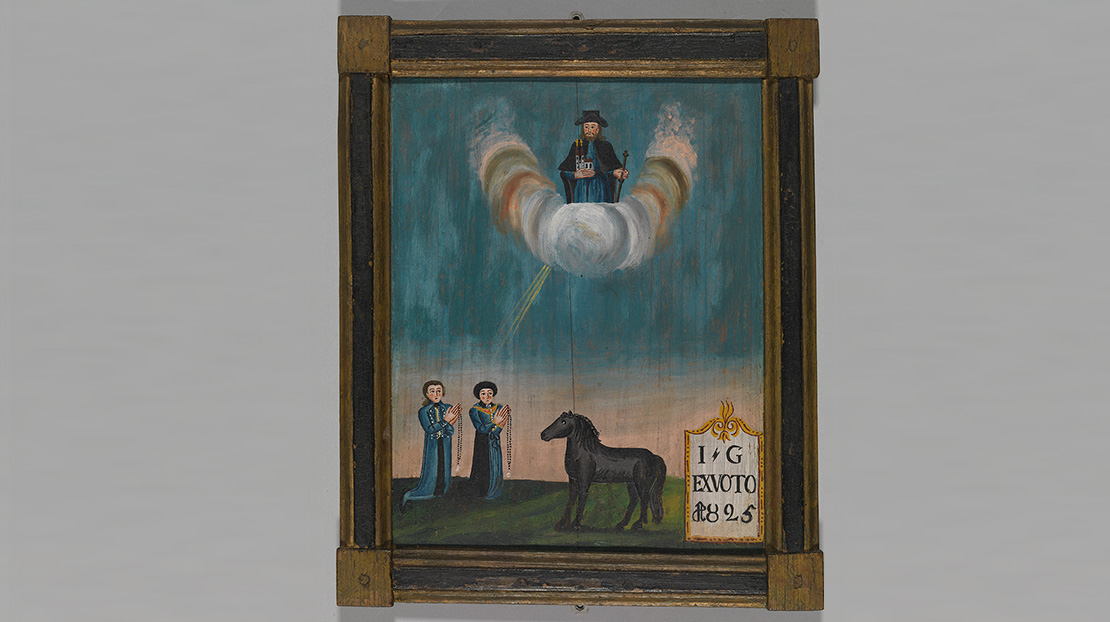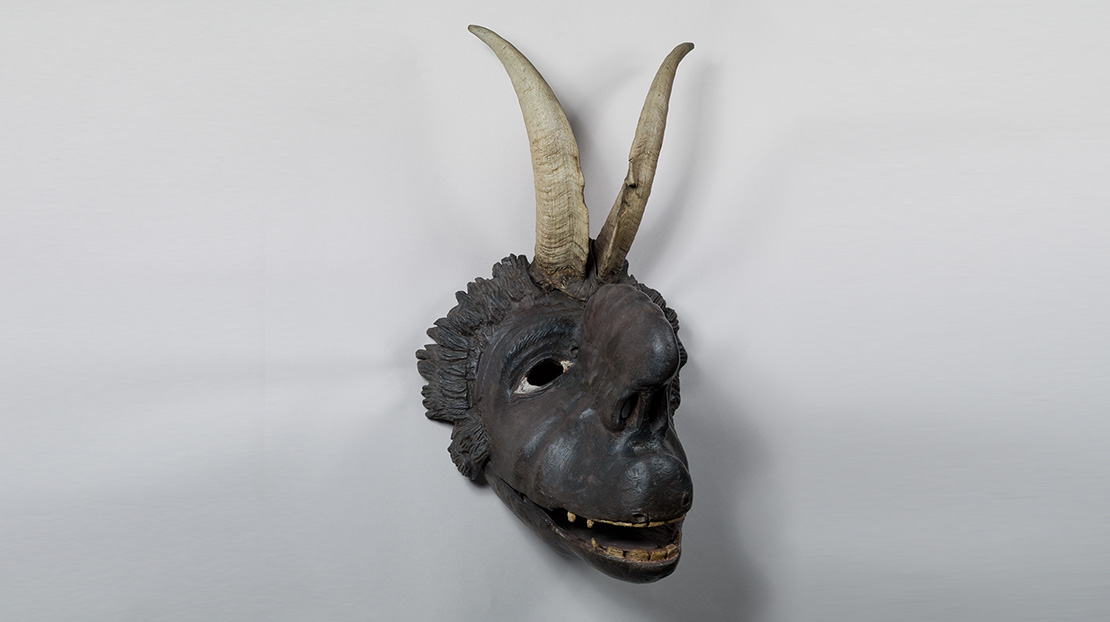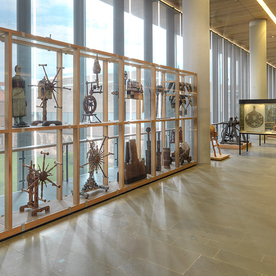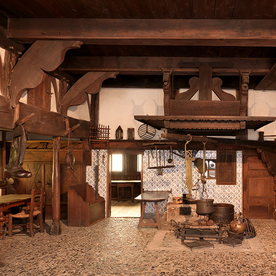Folk art
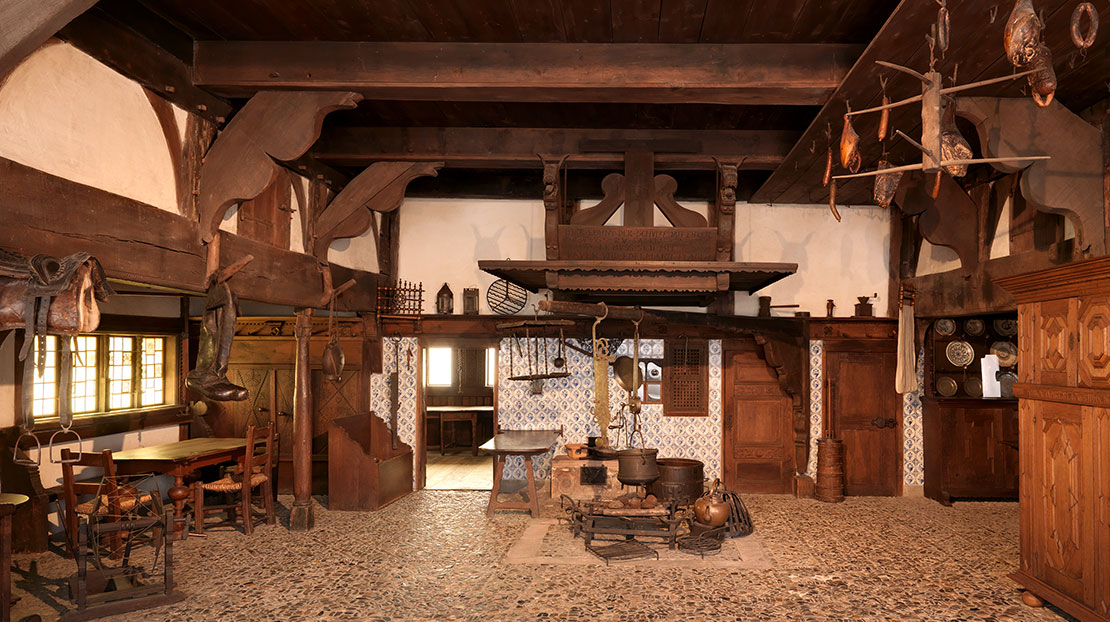
The permanent exhibition features themes from the broad area of folk culture from the 17th to the 19th century, which in this period took on different regional forms. The rooms of rural living were opened to the public for the first time on the museum's 50th anniversary in 1902. Heart of the presentation is the room ensembles or "rustic rooms": "Flett und Döns" – hearth and living room – showcase the domestic section of a Low German hall house. A room from Hallig and rooms from Kremper Marsch, the Lower Inn valley and Thurgau in Switzerland give a broad geographical overview, albeit idealized, of the lifestyles of wealthy landowners. The exhibition also contains individual pieces of rustic furniture, allowing the visitor to compare key furniture types, as well as different furniture landscapes. Domestic utensils are classified by material groups. Furthermore, a collection of vessels made of different materials reveals formal dependencies and shows how towns and cities influenced rural crafts. A final focal point is the use of mask.
One floor of the exhibition is dedicated to Catholic devotional objects from southern Germany and Austria. The main objects are votive tablets and offerings given in huge numbers by believers after the Counterreformation as the popularity of the pilgrimage increased. These thematically exhibited objects, which are important sources for social, cultural and medical history, are supplemented by similarly organized benefactor paintings and paintings depicting pilgrimages from around 1500. Rustic furniture and reverse glass paintings mass-produced in the 18th and 19th centuries exemplify how people desired to reassure themselves of the presence of God and saints in the private sphere through signs and images.
Examples of objects
Exhibition rooms

Information and Services
Plan Your Visit
Opening Times
Location and Approach
GNM Museum Shop
FAQ
Library
Branches
Contact

